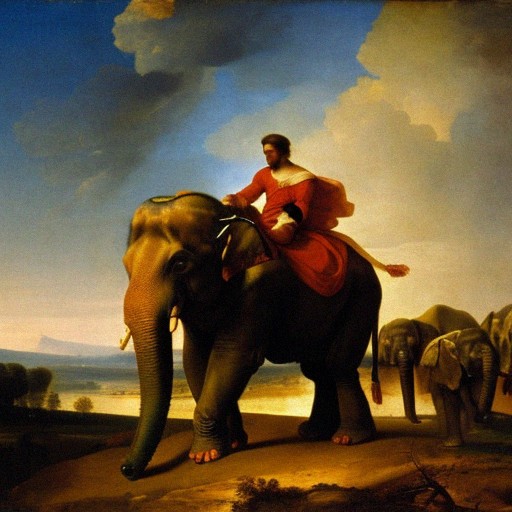
[Ed. note: Illustrations will consist of AI generated images of well-known historical painters riding an elephant in their painting style.]
Artificial Intelligence + Art.
Is it intelligent? Is it art?…
Cheap, fast, evocative imagery has been the goal of many painters for decades, if not centuries. But if you haven’t been paying attention to the recent advances in Artificial Intelligence (a term I will shorten to AI) and how it is being applied these days, I have some news for you.
AI image generators are now here and they are being used to produce artwork for little to no cost. While most of what you see today may seem amusing or weird you need to know technology of AI is still in its infancy. AI art will continue to quickly evolve and disrupt the world of fine art soon. It is already creating turmoil in the fields of photography, illustration, gaming, animation & film. So believe me when I tell you AI will start disrupting your world too.
But what is AI art? And why should you care? In simple terms, AI art is produced by entering text descriptor into an online AI engine and waiting for the engine to return a digital image assembled from similar images scraped on the internet. There is little to no skill required, just a brief description of what you want combined with a seed image to style the result.
All the illustrations included in this article have been generated by me using three AI engines with a similar prompt: “[Name of famous painter] Riding an Elephant”. Each engine appears to have its own quirks and specialties.
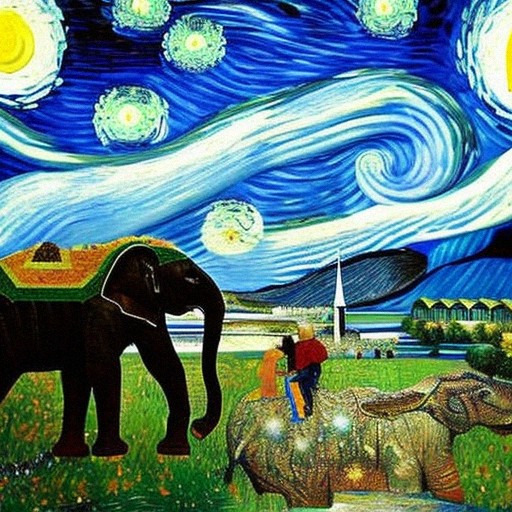
So if you are a professional artist, or have aspirations to become one, there are several things you want to monitor: specifically, how fast AI technology is advancing. The glitches and oddities we see today will be gone within 6 to 12 months, making it difficult for everyone to differentiate between a photo of painting and an AI generated image pretending to be a painting.
AI can produce an image that may appear at first glance incredibly realistic. That is until you look more closely at the image and realize it is a digital pastiche gone horribly wrong. Hands with six to twelve fingers, heads with mis-aligned eye sockets, odd-looking pupils, too many arms & legs sprouting out of a torso or head. (For examples, see some of the elephants in this article.) The realistic veneer AI can produce feels simultaneously authentic and creepy – a perfect example of what the animation industry has long called falling into the Uncanny Valley – a phrase coined to express what was once considered a paradox: the closer a computer gets to replicating reality, the more humans are creeped out by the remaining gap between CGI and reality. But the Uncanny Valley shrinks everytime CGI software is updated and eventually that gap will close completely and you will never know if an image is real or not.
So now you know what AI art is. But more important, how will it impact you and your art? Unless you make your living producing surreal or fantasy art, probably not much yet.
Yet. – I predict AI technology will fundamentally change how the world views and values art. Why? Because soon there will be so much AI art produced that the sheer volume of it will alter our cultural tastes and unless new laws are drafted and implemented quickly the technology will run rough-shod over existing copyright law and change our idea of what it means to control our own work.
I have a close friend who is a well-known, painterly illustrator. He is litigant in a class-action lawsuit with three AI engines that have scraped his work more than 200,000 times. His work was not only scraped for his imagery and style, his name has been illegally attached to some of the AI output, which is what his lawsuit is about. (An image, AI or not, is not considered a forgery until someone attributes it to an artist who did not produce it.) The fact that my friend is so well-known and popular, and works at such a high level in the industry, makes his work a prime target for AI engines.
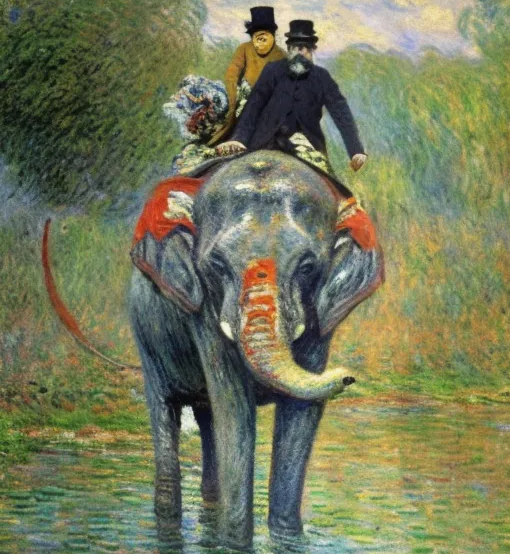
The definition of art forgery can be reduced to this: You and I have the right to copy an artist’s style and content as much as we wish, be they well-known or not, but the moment you or I assert the work we’ve created was produced by the artist we copied we are committing fraud. Fraud does not occur when someone makes an image. It occurs when they lie about who made the image.
In rough numbers, 3 to 5 billion images are uploaded to the internet every day and that number will keep rising. If you don’t believe this factoid, google it. This means at the top end 57,246 images are uploaded every second! All the paintings you and I have posted online are now being scraped by AI bots seeking to appropriate them for someone else’s purpose and profit – and therein lies the problem.
Under the revised 1977 US Copyright Laws, as soon as the work is completed, a copyright is created and owned by the creator. No other action is required to generate a copyright.
However, if AI bots are able to scrape every image online and reassemble bits and pieces of them all into a “new” image for someone else’s benefit, you won’t know when, how, or where your work was scraped. Or how it is being used. (My friend was able to determine the extent to which he had been scraped by checking with www.HaveIBeenScraped.com – a site that is no longer online.)
So the AI legal questions become: Can a bot be creative? Can it produce an “original” work of art by combining images from other artists’ oeuvre? Is creativity an act limited to humans or can a bot produce an original as well? And when it becomes impossible to differentiate between images produced by a human and a bot (which will happen soon) will such distinctions matter? Remember, AI can appropriate your time, effort, expertise, and yes, even years of sacrifice without offering you compensation.
I am not talking about the future. The future is now.
Like many painters today, I started out as a designer, art director, & illustrator. I spent 30 years in the biz, both as an employee and later as the principal of my own firm. I was good at what I did and enjoyed every minute. I made good money until I decide to shut it all down and become an artist. (Which is story for another time.)
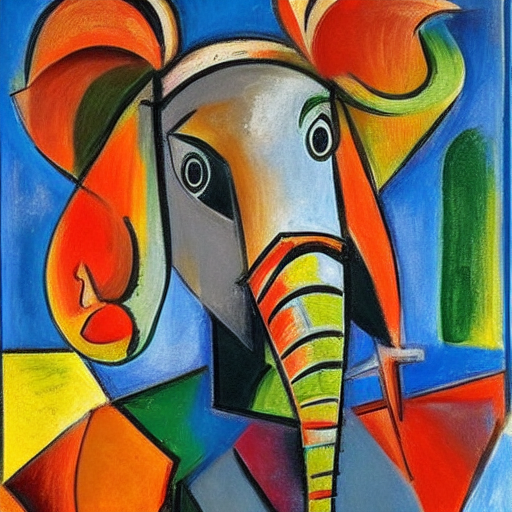
During the same period, I invested a lot of time and resources into learning how to paint at a professional level. I produced work to sell in galleries and exhibit in museums and built up a personal collector base. Not an easy thing to do when you are holding down a 60 hr/wk job or running a design practice. And if that wasn’t enough, I also chaired a four-year BFA program for ten years where I was responsible for developing curriculum, hiring and firing, maintaining national accreditation, and yes, teaching undergrads on a daily basis throughout the week.
AI can do most, if not all of these tasks now. Or it will be able to soon. Both in the commercial and academic sectors.
I have always visualized mass culture as a gigantic amorphous swamp in which competing trends and topics burp and bubble their way to the surface, often without logic or apparent cause and effect. But now, due to the massive amount of information collected from you and I as we consume everything from food to media – the Big Info/Service/Entertainment Complex has become a cultural behemoth loosely synchronized by the sale and exchange of our information. For example, consider how pop music and block-buster movies are engineered today: Not written. Not filmed. Not scripted or directed via artistic intuition. Instead, engineered, verified, and market-tested before being released to the public. These industries use your data to anticipate or shape social trends in the hope that such granular knowledge of you and I will guarantee a return on their money. AI will be applied to every artistic discipline because it reduces corporate risk. In effect, AI will homogenize the content you and I experience.
Here is another prediction from me. (aka Mr. Plein Air Nostradamus). AI will pervade our society to the point that high-end art collectors will start seeking out what they believe is the authentic; meaning, what verifiably comes from a human. Art that expresses the human voice and condition. And if that voice resonates with them, those collectors will be happy to pay a premium for it.
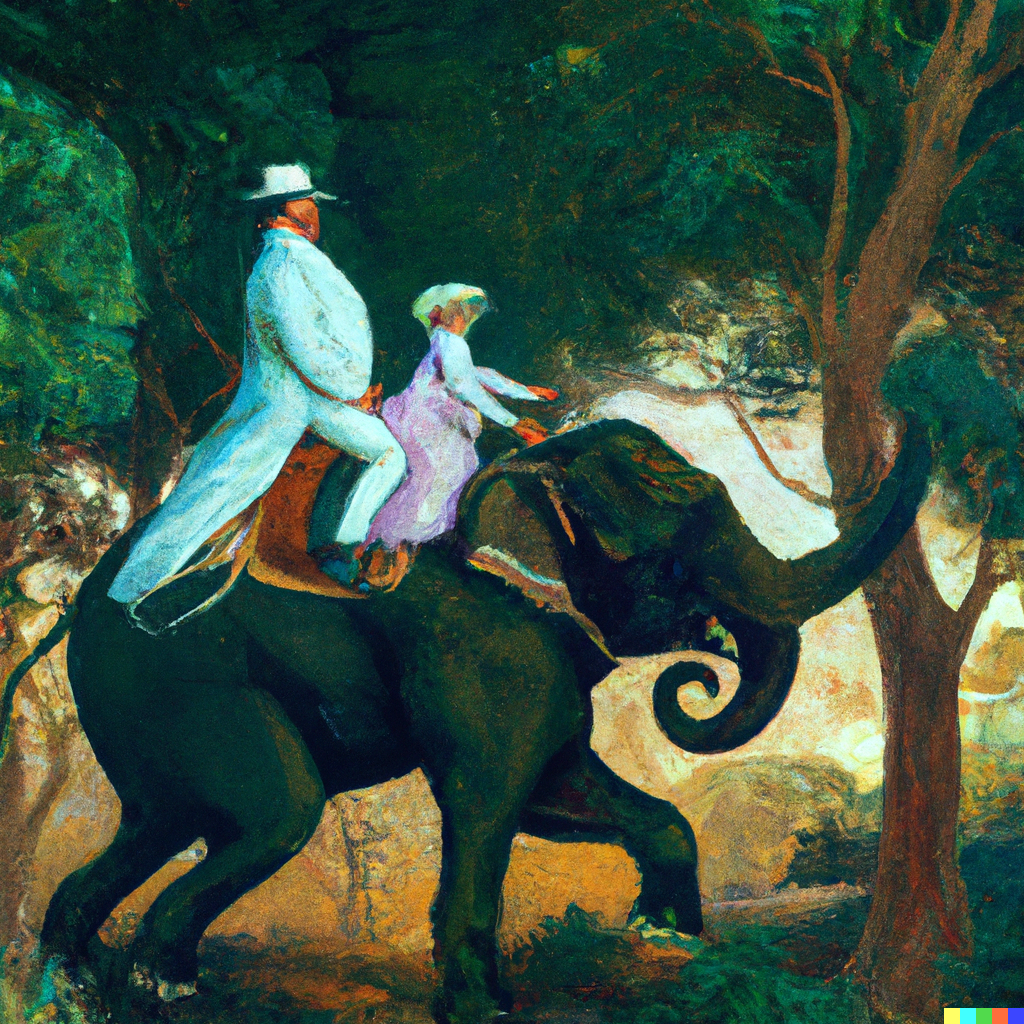
If you have read this far then you are probably a painter. If you aspire to make a living from your work then focus on putting your own voice in your work – not in the giclee prints you produce, or the merchandise you hope to license. Put your voice into your originals because that will be what will makes your work meaningful to others. If you produce only originals, one-offs, then the demand for your voice will become stronger, because if there is only one of something, it is the original, and collectors like originals.
So with regards to AI, what can you do? Think about what makes your voice resonate. It may feel narcissistic to frame your motivation this way, but what you and I do is inherently narcissistic so cop to this fact and move on. After all, we artist must become a little self-focused if we are to survive the oncoming uncertainties of our chosen calling.
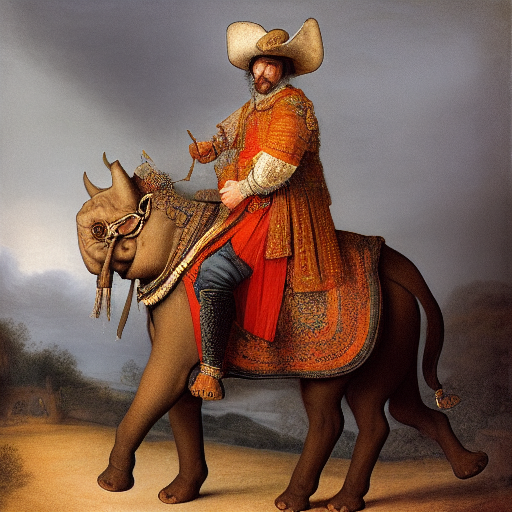
In the end you and I will not be able control how AI bots impact our community because there is too much money at stake. And to be fair, there is an upside to AI. It will increase efficiencies in critical service sectors such as healthcare, investment, manufacturing, travel, energy production, conservation, and more. So AI will have a positive impact on most people.
But by all means future-proof yourself by pouring your singular voice into your work. To steal a quote: “Now get out there and go do the voodoo you do so well.”* Focus on your own creativity but keep strengthening authentic relationships with your friends, peers, and collectors because they will be the people who continue to value what you do.
–––––––
* If you are of a certain age like me, you might think this quote comes from Mel Brook’s “Blazing Saddles’ but it does not. It was coined by Cole Porter in a 1929 song and later appropriated by Harvey Korman for the 1974 movie – a perfect example of the burp and bubble of our cultural swamp.
Doris Marie Provine says
Kitts is right, both in his description of the art world future and in his recommendation. Try it yourself as my friend did. I’m not attempting to make my living through painting, but this article gives me new impetus to find subjects that move me and might move others as well.
Deborah Allison says
What a great article! I appreciate the honesty and clarity, as well as the positive turn towards the end. Thank you!
Pat Meier-Johnson says
A superb article and demonstration of AI. Thank you for providing hope as well as a clear understanding of what AI means to the future of artists like us.
Peggy Immel says
Jeepers what a great blog post! Thinking AI really missed the mark on the Rembrandt though.
James Crandall says
Great topic, thanks.
I see no real obstacle to AI + robotics producing convincing paintings with the same brushes that human artists use.
Even the randomness, serendipity and “creativity” that we think are uniquely human can be simulated – with many variations, and at great speed.
Will consumers really pay more for Art that is produced by human hands? How many will continue to buy paintings when they are already more expensive by the square foot than high-definition screens?
Leah Wiedemer says
Great article! It made me think, but not despair.
Ed Penniman says
I have found MidJourney to often surprise me with the variants provided by variations and upscaling. It is scary how quickly an image can be generated. I’m not afraid of AI because I paint for myself and if people like what I do and buy it great. Many mediocre painter have the American illusion of being rich and famous. If one uses AI as a resource for random imagination that is a good thing. I find it interesting to do a painting then describe it in a prompt and see that the bot produces. The interpretation or misinterpretation of the prompt can lead to out of the box results that can trigger my imagination. Good article, thanks Tom
Chas Martin says
Great perspective. I also have considered, but have not yet attempted prompting an AI engine to show me what my imagination has not yet created. Interesting concept. I have always been an advocate of exploration of unfiltered triggers to provoke new ideas.
Katherine Galbraith says
Wow, thanks for the heads up!
JOHN BUXTON says
YES, i was speaking to a friend on the Antiques Roadshow TV show. He told me all of this , and mentioned that the Roadshow has been dealing with , or trying to deal with AI generated “antique bronzes” etc. It being impossible to tell because AI can reproduce the old formulas of the metal and patina etc.
He warned me of this “on us now” Fine Art situation .. how I should be providing provenance to my collectors for my early paintings and my today & my future paintings . In the future they may be hard pressed to prove their paintings were produced by me.
Another retired Antiques Roadshow member , who writes, told me that his career as a writer is nearing an end because AI can assemble all articles on a certain subject , by every writer that ever wrote, and then produce an article superior to most existing writers today.
On local TV here, one of our universities explained their efforts At AI and showed a one arm Bot mixing paint and applying paint to a canvas depicting a landscape. It did not get closer enough to see quality , but it doesn’t matter. It will be able to produce a ( chose artist ) exact style , paint quality , brush stroke , composition , theme etc. of that artist. OR , should you desire … mix two famous artists and then produce a painting combining their styles, colors , theme etc. etc.& etc.
Kinda glad I am so dang old that all of this may not affect me … or becoming senile soon, I will NOT KNOW . LOL
Joseph Melançon says
It’s downright scary and I don’t like it one bit. What we artists think of as creative human made art is in jeopardy for all the reasons stated in the article.
Michael Davis says
Great article; had me worried for a while, but upon reading this:
…AI will pervade our society to the point that high-end art collectors will start seeking out what they believe is the authentic; meaning, what verifiably comes from a human. Art that expresses the human voice and condition. And if that voice resonates with them, those collectors will be happy to pay a premium for it….
AI will pervade our society to the point that high-end art collectors will start seeking out what they believe is the authentic; meaning, what verifiably comes from a human…
Good to know. Now I can sleep at night knowing that my handiwork will always be considered special, never a souped-up non-fungible token that people with too much money and not enough sense will bid up for ridiculous prices. The reason I started making art in the first place will be safeguarded – the joy of personal expression in paint will remain undiminished. Collectors with taste will always appreciate the unique mark of a human over that of a machine, even if an exact duplicate can be generated, and the principles of fine art – composition, color, style, anatomy, etc. will still be the criteria that determine quality and collectability.
Franklin Mendez says
I heard about AI yesterday at our family Easter get together. I asked a lot of questions, and told myself I needed to look into it. So, without looking to far here it is, all spelled out for me.
Thank you for a superb inside to a very interesting development in the computer world. I remember hearing that computers would be able to create 3D images. I was testing programs for CAD-CAM when I retired. So it does not surprise me that this Artificial Intelligence has arrived. What I don’t think it will do is create a custom piece of art, painted on a canvas. I also think we have the human element of creativity in our favor.
We will just have to be vigilant of our creativity.
Esther J Williams says
Hello Thomas, that is sobering to read. You write so incredibly well. At this point in my older years I choose not to get angry at technology, I just focus on my lane and tell myself I am safe from it all in my world of authenticity. I take some comfort in the fact that I still have art collectors who rather have an original piece of art. This just happened last week when a buyer looked at a poster that was made for an art show with my painting image used with my permission. He asked if there was an original of it and went off to see it and purchased it at a high price. The poster was five dollars, the painting was nearly two thousand. It is my belief that we will survive as long as there are collectors or buyers of original art. There will be as long as the younger folks are cultured by example of their adults who demand originals and visiting museums who carry originals. The influence of museums will be our blessings as I can still remember seeing Van Goghs, Rembrants, Monets and such in NYC when I was 17. It hit me like a rock that authentic art was where I wanted to grow as an artist.
As for the elephant AI images, some are pretty hilarious and I would never take them seriously. For people who want to download that imagery and turn it into a poster, I can read them clear as day. Cheap art for the wall types.
I paint many original oils and watercolors. But I also produce giclees and make a fair income from that from one gallery who offers both originals and giclees. I do get buyers asking for that original or commission me to paint a new unique original from them. It’s all good if the giclees are made by me and using the highest archival materials with limited editions. Have a nice day!
A. Cremins says
Technology changes everything, and always has. Societies change constantly. Money changes everything. Life is change. And art always has the power to make something of these changes.
GERALD THOMPSON says
Perhaps art critics will need to change their approach as well and not simply enforce norms. You have to be nimble to outrun a computer.
Mary Aslin says
Dear Thomas,
This is an absolutely outstanding commentary on what we are facing today as artists. Your analysis resonates with what I believe/hope will stand the test of time and change: Be your best self as an artist, demonstrate what you alone uniquely create with your mind and two hands, and appreciate those who support you.
So many thanks to you for this perfectly written assessment.
Roberta Sorenson says
Thank you for taking the time to educate us on this matter. Hopefully AI will be like player pianos of yesteryear were to music . Or really what elevator music is to the ears,-AI is to the eyes. Looking at what they do now is as soul soothing as the music from an electronic toy. First time you are amused then gradually annoyed. Or like the difference between LED and incandescent. I’m off to create an authentic original —ta ta!
David Henderson says
After reading the first part of this article, I’d intended to respond negatively, but you indeed brought this observation to a conclusion I totally agree with. I to was an illustrator for many years until that industry morphed into the very thing you describe here. I’d gotten into illustration as an occupation where I could be what I loved best – a painter. When markets changed, and illustration became something else, the logical choice for me was to return to “fine art”. Over the past fifteen years, I’ve exhibited in several galleries and done rather well. Interestingly, a main rule these galleries share, is that they do not make prints! My clients in both galleries want original art, and they pay dearly for it. I’ve come to realize that art purchased by collectors is valued for its authenticity. This is something no machine can ever do.
Lani Halter says
I am late reading this article posted in April..it’s September now. Anyway, I was fascinated reading all of it, but in the end I’ve found I want to know the outcome of your friend’s class action lawsuit. Has it already ended, or just still in the early stages?
My ex and I were involved in a class action “subsidence” lawsuit…it took two long years to complete and that’s not really the total length of time the whole issue involved us and effected our lives. So, if that’s any indication of how long such an action could take, maybe, your friend’s hasn’t finished yet. Please let me know, when you know Thomas. I will greatly appreciate the update. Thank you for the warnings. I’m sure having your work “scraped” is a hard pill to swallow if it ever happens to you. Sometimes, it’s a really “hard world” out there…even when we aren’t coping with a slew of other things like the recent global warming/climate change horrible “weather” happening all around the world these days… heck! hahahaha sometimes I just have to laugh, because it seems like it can’t get any worse! (I know you mentioned that AI might be helping with gw/cc, but tonight I’m too tired to figure out how… g’night thanks for your posts, Lani
Shawn says
timely article to stumble upon. I had a conversation today with a post grad student from overseas. I asked him his opinion of AI, and he responded it will be everywhere very soon. he also mentioned working in Europe where they are embracing technology with a speed that makes some countries seem backwards.
I hope the case for human fine art does, in truth, remain desired.